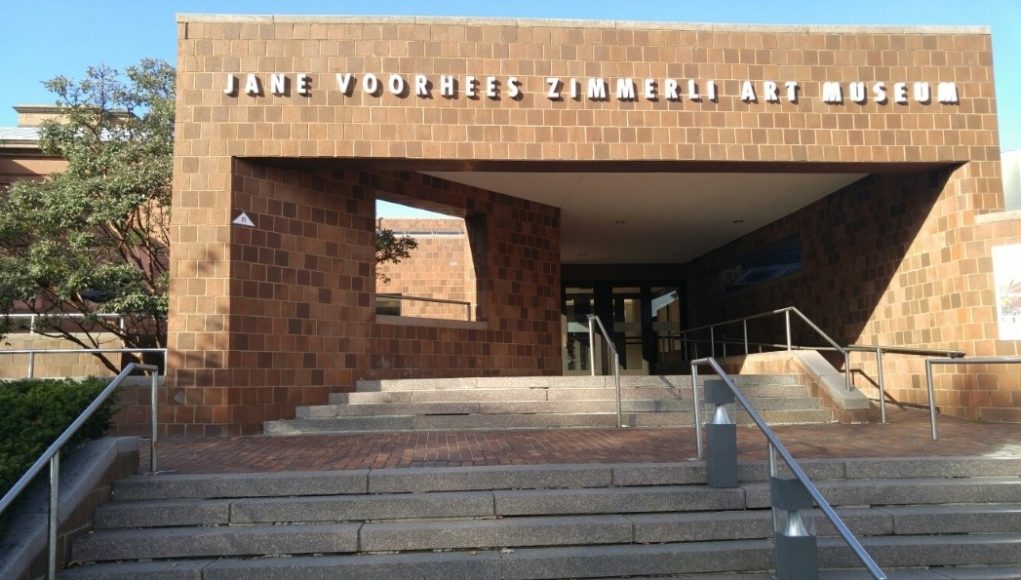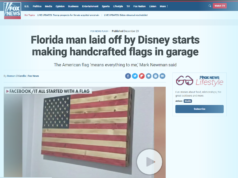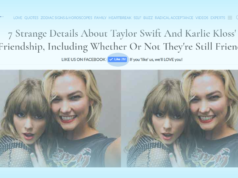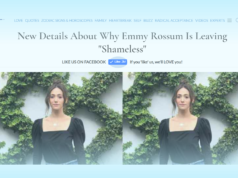NEW BRUNSWICK, New Jersey – A current art exhibit promises to please cat and dog lovers alike. “On the Prowl: Cats and Dogs in French Prints and Drawings” depicts pets in various settings. The exhibit is currently being held at Zimmerli Art Museum, located on Rutgers University’s College Avenue Campus in New Brunswick.
Over twenty prints, etchings, and illustrations are housed in a room on the museum’s upper floor. Guests are invited to observe the collection at their own pace. Descriptions of each artwork are written on small white cards. Works featured at the exhibit include Two Pointers, Cat, and Summer: Cat on a Balustrade.
Created in 1907 by Maurice-Charles-Louis Taquoy, Two Pointers stands at 10 by 18 inches. This color etching was gifted to the museum by Mr. and Mrs. Herbert Littman. The print depicts two spotted dogs pointing their noses toward the left of the frame. The dogs are standing on a vast red and brown platform resembling mud. A small line of small tan huts and buildings stands far in the background.
Throughout his artistic career, Taquoy specialized in illustrating hunts and horse races. Two Pointers is no exception, as its two central figures are presumably targeting prey. The portrayal of the dogs mirrors portraits found in royal French lodges in the eighteenth century. Though Taquoy frequently used cubism in his artwork, this is not visible in Two Pointers; the lines and forms seem to blend into one another and little shadow is used. Instead, the piece is influenced by the qualities of expressionism. Expressionist art became popular in Germany in 1905 but quickly spread throughout Europe. Works in this style use distortion and exaggeration to illustrate subjective emotions evoked by certain entities. In Two Pointers, Taquoy exaggerates the size of the dogs in the foreground. This draws attention to the central figures while reducing the prominence of the surrounding neighborhood. Taquoy’s choices suggest a personal prioritization of animals and nature over human innovation and civilization.

Henri-Charles Guérard’s Cat employs a more abstract form. The etching, done circa 1888, spans 6 by 4.5 inches and was purchased by the museum. The central black cat’s face stands in strong contrast to the surrounding white and gray background. Dense dark lines serve to enhance this distinction. The etching was originally meant for inclusion in a larger print. Guérard planned to depict a black cat sitting atop a newspaper but never finished the project.
Cat is just one of many animal etchings in Guérard’s collection. Guérard, an animal lover, has also illustrated portraits of a tiger, a crow, and rabbits. In each of these, the subject lacks sufficient detailing and is drawn using only thin black lines. Context is also nonexistent in these works, as the animals are shown against a blank background. Ultimately, Guérard’s etchings lack the creativity and originality seen in other works throughout the gallery.
Summer: Cat on a Balustrade was created by Théophile-Alexandre Steinlen in 1909. This color lithograph on paper was purchased using the Class of 1958 Art Purchase Fund. The print heavily relies on recognizable forms and colors. Black swirls and grayscale gradients compose the feline subject of the print. The balustrade is drawn using an oak-brown base and dark espresso detailing. The background is comprised of oblong leaves in various green shades. The piece’s vivid colors and well-defined shapes stands in stark contrast to Guerard’s work.
Throughout his career, Steinlen dabbled in many different mediums, including posters, drawings, prints, and even sculptures. His drawings of human subjects often take on a realist form, depicting despair or desolation. They are often drawn exclusively in black and white using thin pencil lines. However, his animal works are much more colorful and vibrant, perhaps due to a personal bias. Steinlen frequently chose cats as his subjects because he appreciated their personalities and movements.
The exhibit is just one of many being hosted at the museum. Additional collections include “Commemorating the Russian Revolution” and “Subjective Objective: A Century of Social Photography.” The museum’s expansive front lobby houses a directory detailing exhibits in each of its five wings. Informational packets explaining each exhibit can be found at the front desk.
“On the Prowl” opened at Zimmerli Art Museum last September. Admission is free, but guests are encouraged to donate to the museum. The exhibit will run until July 2018.
###








